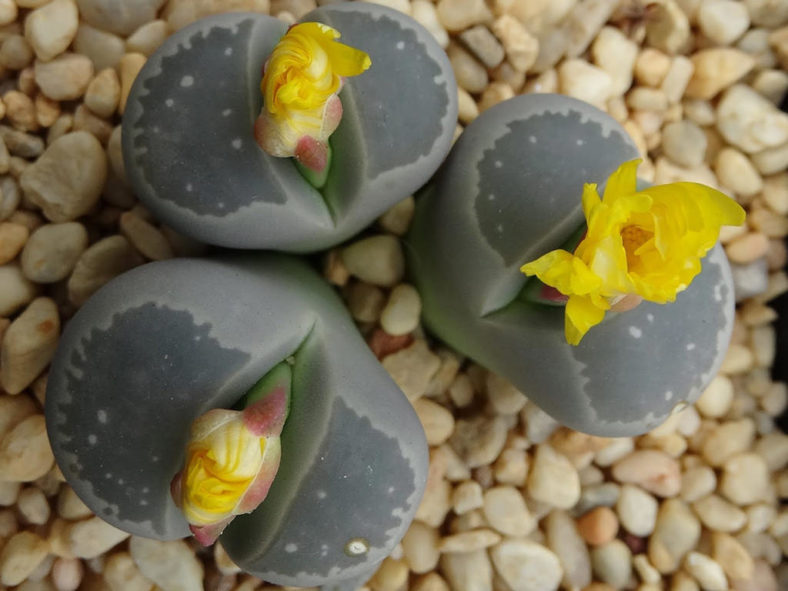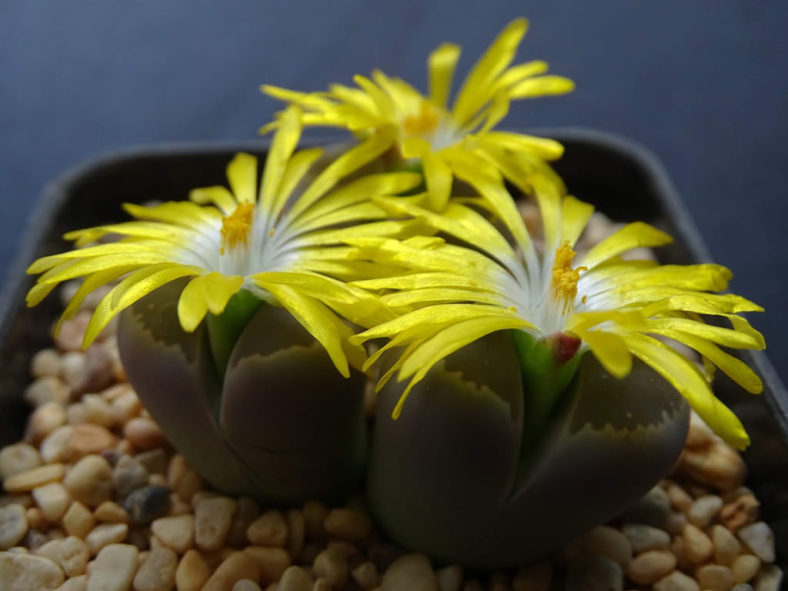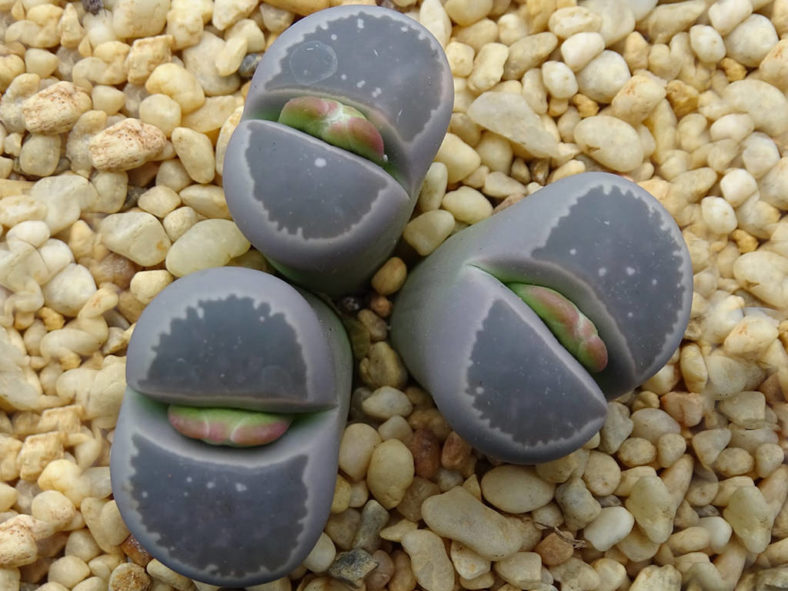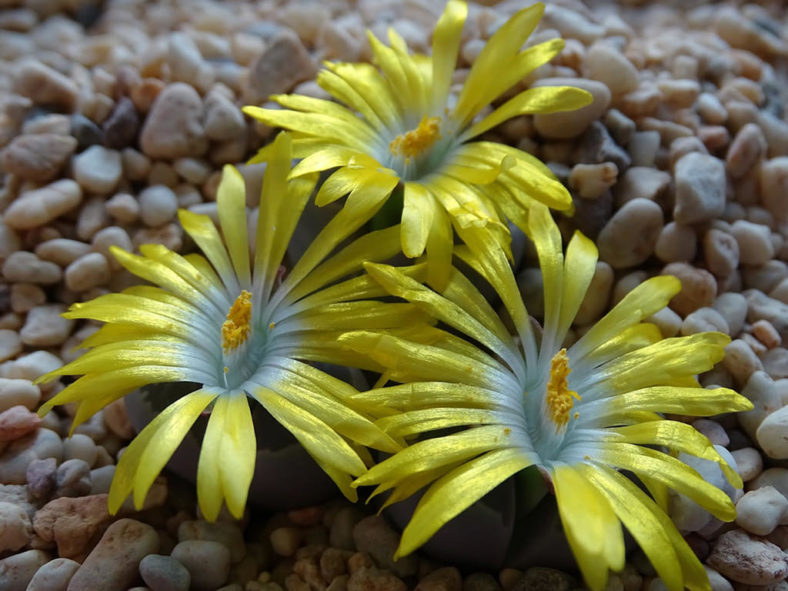Scientific Name
Lithops olivacea L.Bolus
Common Name(s)
Green Stone Plant, Olive-green Living Stone
Synonym(s)
Lithops olivacea var. nebrownii
Scientific Classification
Family: Aizoaceae
Subfamily: Ruschioideae
Tribe: Ruschieae
Genus: Lithops
Etymology
The specific epithet "olivacea (oh-lee-VAY-see-uh)" means "olive-green" and refers to the olive-green window at the top of the leaves.
Origin
Lithops olivacea is native to South Africa and Namibia. It occurs on big outcrops of quartz or, more commonly, on quartz plains, primarily in the Bushmandland.
Description
Lithops olivacea is a dwarf succulent with bodies that consist of two opposite, partly fused leaves. It forms large clumps of up to 30 bodies with time. The bodies can grow up to 4 inches (10 cm) tall and 1 inch (2.5 cm) wide. The thick, fleshy leaves have grey sides, sometimes tinged greenish-yellow or purplish, and olive-green or greyish-green windows with few paler or usually completely absent dots.
The yellow flowers with a white center appear from the fissure between the leaves in late summer and early fall. They can reach up to 1.6 inches (4 cm) in diameter.

How to Grow and Care for Lithops olivacea
Light: A sunny windowsill where the plant receives 4 to 5 hours of direct sunlight during the early part of the day and partial shade during the afternoon is the perfect spot. You may place the plant on the balcony or in the garden from spring to fall.
Soil: Lithops olivacea thrives best in soil that will drain quickly. Use a commercial potting mix for succulents, or make your own.
Temperature: High temperatures are not a problem for this plant as long as there is plenty of fresh air, but it is not a cold-hardy succulent. It grows best in USDA Plant Hardiness Zones 10a to 11b, with average minimum winter temperatures ranging from 30 to 50 °F (-1.1 to 10 °C).
Watering: Since this plant has a specific yearly growth cycle, it is important to water only during certain stages, but it is also important to keep the soil dry at other stages of its growth. How often to water Lithops olivacea depends on how quickly the soil dries out. Stop watering during the winter to allow the old leaf pair to dry out and the new pair to develop.
Fertilizing: As long as you repot this plant every two years, it does not need fertilizer.
Repotting: Even if it can stay happy in the same pot for decades, once in a while, repot the plant to give it more space anytime during the growing season. However, the best time for repotting is the beginning of the growing season.
Propagation: Lithops olivacea is usually started from seeds sown during the summer. However, if you have a multi-headed plant, it can also be easily propagated by division.
Learn more at How to Grow and Care for Lithops.
Toxicity of Lithops olivacea
Lithops olivacea is non-toxic and safe to have around children and pets.
Links
- Back to genus Lithops
- Succupedia: Browse succulents by Scientific Name, Common Name, Genus, Family, USDA Hardiness Zone, Origin, or cacti by Genus
Photo Gallery
Click on a photo to see a larger version.


